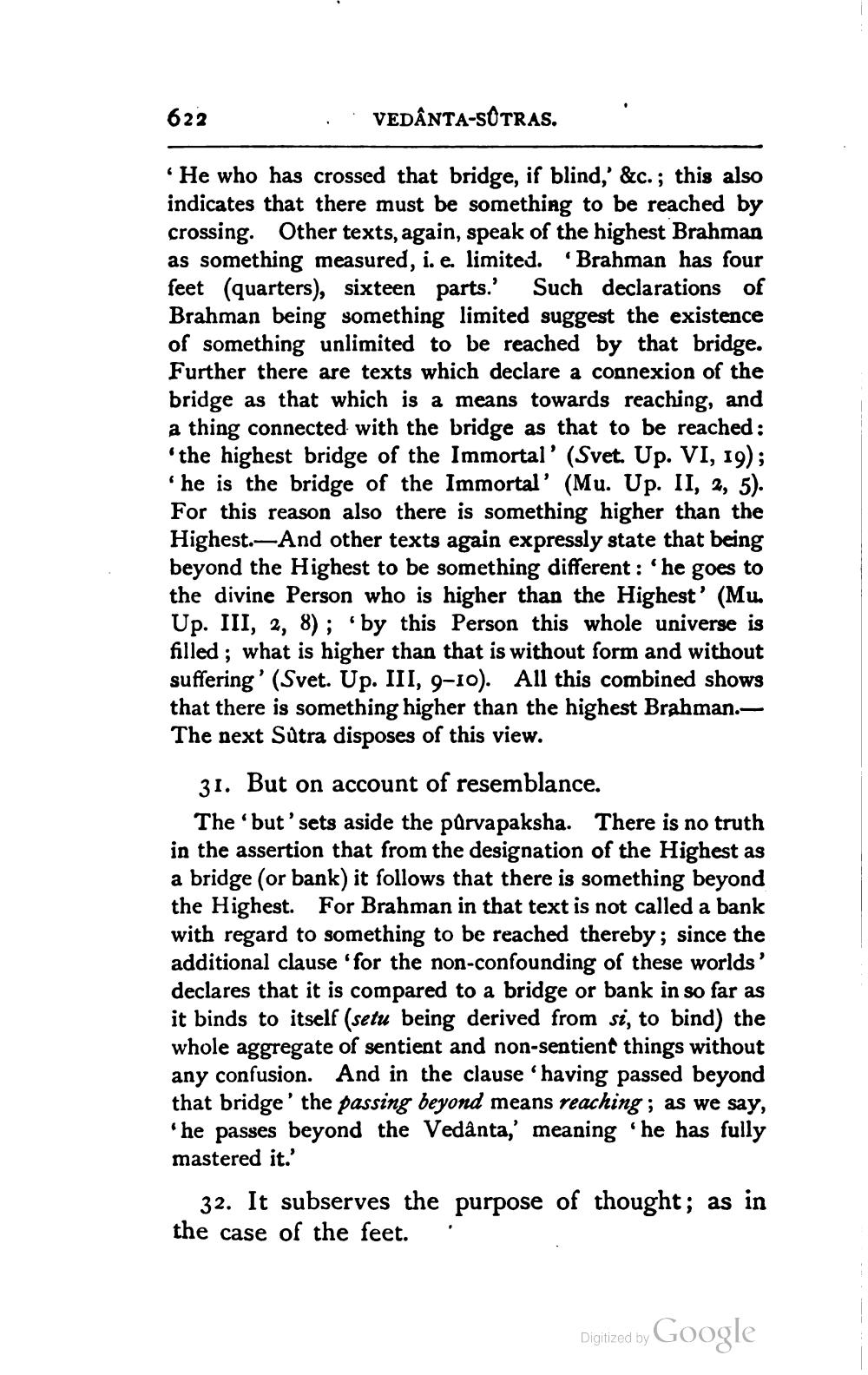________________
VEDANTA-SUTRAS.
'He who has crossed that bridge, if blind,' &c.; this also indicates that there must be something to be reached by crossing. Other texts, again, speak of the highest Brahman as something measured, i. e. limited. 'Brahman has four feet (quarters), sixteen parts.' Such declarations of Brahman being something limited suggest the existence of something unlimited to be reached by that bridge. Further there are texts which declare a connexion of the bridge as that which is a means towards reaching, and a thing connected with the bridge as that to be reached: 'the highest bridge of the Immortal' (Svet. Up. VI, 19); 'he is the bridge of the Immortal' (Mu. Up. II, 2, 5). For this reason also there is something higher than the Highest. And other texts again expressly state that being beyond the Highest to be something different: 'he goes to the divine Person who is higher than the Highest' (Mu. Up. III, 2, 8); by this Person this whole universe is filled; what is higher than that is without form and without suffering' (Svet. Up. III, 9-10). All this combined shows that there is something higher than the highest Brahman.— The next Sutra disposes of this view.
622
31. But on account of resemblance.
The 'but'. sets aside the pûrvapaksha. There is no truth in the assertion that from the designation of the Highest as a bridge (or bank) it follows that there is something beyond the Highest. For Brahman in that text is not called a bank with regard to something to be reached thereby; since the additional clause 'for the non-confounding of these worlds' declares that it is compared to a bridge or bank in so far as it binds to itself (setu being derived from si, to bind) the whole aggregate of sentient and non-sentient things without any confusion. And in the clause 'having passed beyond that bridge' the passing beyond means reaching; as we say, 'he passes beyond the Vedanta,' meaning 'he has fully mastered it.'
32. It subserves the purpose of thought; as in the case of the feet.
Digitized by Google




